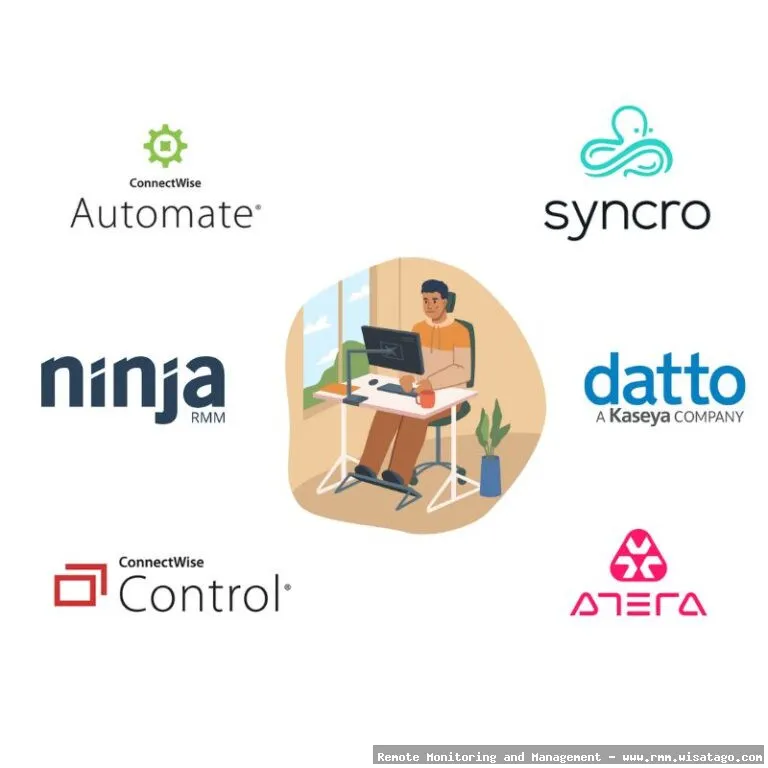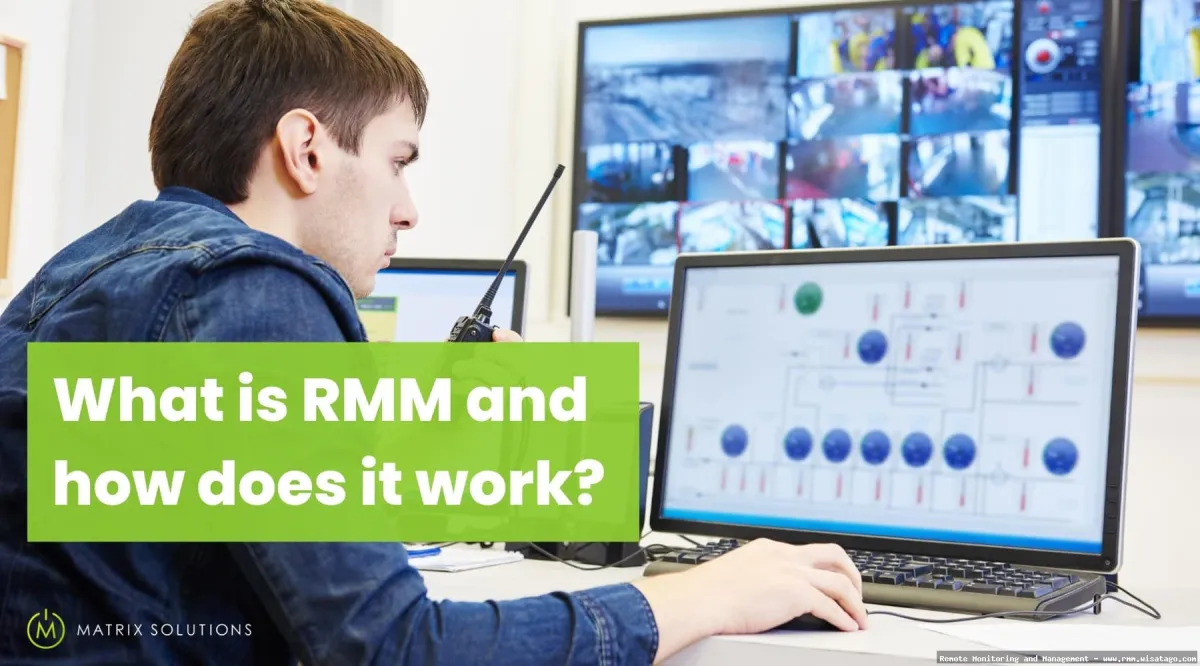The manufacturing industry, with its intricate web of machinery, software, and interconnected systems, relies heavily on uptime and efficiency. A single point of failure can trigger a cascade of problems, leading to production delays, financial losses, and even safety hazards. That’s where High-Performance Remote Monitoring and Management (RMM) comes into play – it’s not just a nice-to-have, it’s a critical component for maintaining operational excellence in today’s competitive landscape.
Think of RMM as a vigilant guardian, constantly monitoring the health and performance of your entire manufacturing IT infrastructure, from the PLCs controlling your robotic arms to the servers hosting your ERP system. It allows IT teams to proactively identify and address potential issues before they escalate into major disruptions. This proactive approach translates to reduced downtime, increased productivity, and ultimately, a healthier bottom line. But not all RMMs are created equal. A high-performance RMM solution tailored for manufacturing goes beyond basic monitoring – it provides deep insights, automation capabilities, and robust security features specifically designed to meet the unique demands of the industry.

This article delves into the world of High-Performance RMM for manufacturing systems. We’ll explore its key features, benefits, and implementation considerations, providing you with a comprehensive guide to understanding how this technology can transform your manufacturing operations. We’ll also address the challenges IT teams often face and offer practical advice on selecting and deploying the right RMM solution to ensure a smooth and successful integration.
Understanding High-Performance RMM for Manufacturing
At its core, RMM software allows IT professionals to remotely monitor and manage their clients’ or their own internal IT infrastructure. This includes servers, workstations, network devices, and, crucially in the manufacturing context, specialized equipment like Programmable Logic Controllers (PLCs), Human Machine Interfaces (HMIs), and other industrial control systems (ICS). High-performance RMM takes this a step further, offering advanced capabilities specifically tailored to the needs of demanding manufacturing environments.
Key Features of High-Performance RMM
A high-performance RMM solution for manufacturing should include the following key features:

- Real-time Monitoring: Continuous monitoring of all critical systems and devices, providing instant alerts when performance thresholds are breached or anomalies are detected. This includes CPU usage, memory consumption, disk space, network latency, and application performance.
- Automated Patch Management: Automatically deploy security patches and software updates to keep systems secure and compliant. This is particularly important in manufacturing, where outdated software can be a major vulnerability.
- Remote Access and Control: Securely access and control remote devices to troubleshoot issues, perform maintenance, and deploy updates without physically being on-site. This significantly reduces response times and minimizes downtime.
- Asset Management: Track all hardware and software assets, including serial numbers, warranty information, and software licenses. This provides a comprehensive view of the IT infrastructure and simplifies asset tracking and management.
- Alerting and Notifications: Configure customizable alerts and notifications to be sent via email, SMS, or other channels when critical events occur. This ensures that IT teams are immediately aware of potential issues and can respond quickly.
- Reporting and Analytics: Generate detailed reports on system performance, security events, and other key metrics. This provides valuable insights into the health and efficiency of the IT infrastructure and helps identify areas for improvement.
- Integration with Other Systems: Seamlessly integrate with other IT management tools, such as help desk systems, security information and event management (SIEM) systems, and ERP systems. This provides a unified view of the IT environment and streamlines workflows.
- Security Features: Robust security features, including two-factor authentication, role-based access control, and data encryption, to protect sensitive data and prevent unauthorized access.
- Support for Industrial Protocols: Specifically supports industrial communication protocols like Modbus, OPC UA, and Ethernet/IP, allowing for monitoring and management of PLCs, HMIs, and other ICS devices.
- Customizable Monitoring Templates: Offers the ability to create custom monitoring templates tailored to specific manufacturing equipment and processes.
Benefits of Implementing High-Performance RMM in Manufacturing
Implementing a high-performance RMM solution in a manufacturing environment offers a wide range of benefits, including:
- Reduced Downtime: Proactive monitoring and automated remediation help prevent system failures and minimize downtime, ensuring continuous production.
- Increased Productivity: By minimizing downtime and optimizing system performance, RMM helps increase overall productivity and efficiency.
- Improved Security: Automated patch management and robust security features help protect against cyber threats and data breaches.
- Cost Savings: Reduced downtime, increased productivity, and improved security all contribute to significant cost savings.
- Enhanced Compliance: RMM helps ensure compliance with industry regulations and standards, such as ISO 27001 and NIST Cybersecurity Framework.
- Better Visibility: Provides a comprehensive view of the IT infrastructure, allowing IT teams to identify and address potential issues more effectively.
- Simplified IT Management: Automates many routine IT tasks, freeing up IT staff to focus on more strategic initiatives.
- Improved Resource Allocation: By optimizing system performance and identifying areas for improvement, RMM helps improve resource allocation and utilization.
Challenges of Implementing RMM in Manufacturing
While the benefits of RMM are clear, implementing it in a manufacturing environment can present some challenges. Here’s what IT teams need to consider:
- Integration with Legacy Systems: Many manufacturing facilities rely on legacy systems that may not be compatible with modern RMM solutions. Integrating these systems can be complex and require custom development.
- Security Concerns: Remotely accessing and managing industrial control systems raises security concerns. It’s crucial to choose an RMM solution with robust security features and to implement strong security policies and procedures.
- Network Bandwidth Limitations: Manufacturing facilities may have limited network bandwidth, particularly in remote locations. This can impact the performance of RMM solutions and require careful planning.
- Skill Gaps: IT staff may lack the skills and expertise required to effectively implement and manage RMM solutions. Training and certification programs can help bridge this gap.
- Resistance to Change: Some employees may be resistant to adopting new technologies and processes. Effective communication and change management strategies are essential to overcome this resistance.
- Cost of Implementation: The initial cost of implementing an RMM solution can be significant, including software licenses, hardware upgrades, and training costs. It’s important to carefully evaluate the costs and benefits before making a decision.
- Complexity of Industrial Environments: Manufacturing environments are often complex and highly specialized. RMM solutions need to be tailored to the specific needs of the industry.
Selecting the Right RMM Solution for Manufacturing
Choosing the right RMM solution for your manufacturing environment is crucial for success. Here are some key factors to consider:

- Compatibility with Industrial Protocols: Ensure that the RMM solution supports the industrial communication protocols used in your facility, such as Modbus, OPC UA, and Ethernet/IP.
- Scalability: Choose a solution that can scale to meet your growing needs.
- Security Features: Prioritize security features, such as two-factor authentication, role-based access control, and data encryption.
- Integration Capabilities: Ensure that the RMM solution can seamlessly integrate with your existing IT management tools.
- Ease of Use: Choose a solution that is easy to use and manage.
- Vendor Support: Select a vendor that offers reliable and responsive support.
- Cost: Carefully evaluate the costs and benefits of different RMM solutions before making a decision. Consider both the initial cost of implementation and the ongoing maintenance costs.
- Industry-Specific Features: Look for RMM solutions that offer features specifically designed for manufacturing environments, such as support for industrial control systems and customizable monitoring templates.
Best Practices for Implementing RMM in Manufacturing
To ensure a successful RMM implementation, follow these best practices:
- Develop a Clear Implementation Plan: Define your goals, identify key stakeholders, and create a detailed implementation plan.
- Start Small: Begin with a pilot project to test the RMM solution and refine your implementation plan.
- Provide Adequate Training: Ensure that IT staff receive adequate training on how to use and manage the RMM solution.
- Implement Strong Security Policies: Implement strong security policies and procedures to protect sensitive data and prevent unauthorized access.
- Monitor Performance Regularly: Continuously monitor the performance of the RMM solution and make adjustments as needed.
- Communicate Effectively: Keep stakeholders informed about the progress of the implementation and any challenges that arise.
- Integrate with Existing Processes: Integrate the RMM solution with your existing IT management processes to streamline workflows.
- Regularly Review and Update: Regularly review and update the RMM solution to ensure that it continues to meet your needs.
Conclusion
High-Performance RMM is an essential tool for modern manufacturing facilities. By proactively monitoring and managing IT infrastructure, RMM helps reduce downtime, increase productivity, and improve security. While implementing RMM can present some challenges, the benefits far outweigh the risks. By carefully selecting the right RMM solution and following best practices, manufacturers can transform their operations and gain a competitive edge. Remember to prioritize security, ensure compatibility with industrial protocols, and provide adequate training for your IT staff. With a well-planned and executed RMM strategy, you can unlock the full potential of your manufacturing systems and achieve operational excellence. For more information, you can refer to RMM as an additional resource.
Conclusion
In conclusion, implementing a high-performance Remote Monitoring and Management (RMM) solution is no longer a luxury, but a necessity for modern manufacturing systems striving for optimal efficiency, reduced downtime, and enhanced security. As we’ve explored, the ability to proactively identify and address potential issues before they escalate into costly failures, coupled with streamlined IT management and robust cybersecurity measures, provides a significant competitive advantage in today’s demanding industrial landscape. The integration of real-time data analytics, automated tasks, and centralized control offered by advanced RMM platforms empowers manufacturers to make informed decisions, optimize resource allocation, and ultimately improve their bottom line.
The path to a more resilient and productive manufacturing future lies in embracing technology that provides comprehensive visibility and control over your operations. We encourage you to evaluate your current IT infrastructure and explore how a high-performance RMM solution can transform your manufacturing processes. To learn more about specific RMM solutions tailored for the manufacturing sector and to request a personalized demo, please visit www.example.com/rmm-manufacturing. Investing in the right RMM platform is an investment in the future success and sustainability of your manufacturing business.
Frequently Asked Questions (FAQ) about High-Performance RMM for Manufacturing Systems
What are the key benefits of implementing a high-performance Remote Monitoring and Management (RMM) system specifically for manufacturing systems, and how does it improve overall operational efficiency?
Implementing a high-performance RMM system in a manufacturing environment offers several critical benefits that significantly improve operational efficiency. Firstly, it provides real-time visibility into the health and performance of all connected devices and equipment on the factory floor. This allows for proactive identification and resolution of potential issues before they lead to costly downtime. Secondly, RMM enables remote troubleshooting and remediation, reducing the need for on-site visits and minimizing disruption to production schedules. Thirdly, automated patch management and software updates ensure that all systems are secure and running the latest versions, protecting against vulnerabilities and improving stability. Finally, RMM systems often include robust reporting and analytics capabilities, providing valuable insights into equipment utilization, performance trends, and areas for process optimization, ultimately leading to increased productivity and reduced operational costs.
How can a high-performance RMM solution help manufacturing companies improve their predictive maintenance strategies and reduce unplanned downtime on critical machinery?
A high-performance RMM solution significantly enhances predictive maintenance strategies in manufacturing by providing continuous monitoring of critical machinery. RMM systems collect real-time data on various parameters such as temperature, vibration, pressure, and performance metrics. This data is then analyzed to identify patterns and anomalies that may indicate impending equipment failure. By leveraging machine learning algorithms and predictive analytics, the RMM system can forecast when maintenance is required, allowing manufacturers to schedule maintenance activities proactively, before a breakdown occurs. This approach minimizes unplanned downtime, extends the lifespan of equipment, and reduces maintenance costs by optimizing the timing and scope of repairs. Furthermore, integrating RMM with a computerized maintenance management system (CMMS) allows for automated work order generation and efficient resource allocation.
What are the key features to look for when selecting a high-performance RMM platform for a complex manufacturing environment with diverse OT (Operational Technology) and IT (Information Technology) systems?
When selecting a high-performance RMM platform for a complex manufacturing environment with diverse OT and IT systems, several key features are crucial. Firstly, broad device and protocol support is essential to monitor a wide range of equipment, including PLCs, HMIs, sensors, and network devices. The platform should also offer deep integration capabilities with existing manufacturing execution systems (MES) and enterprise resource planning (ERP) systems. Secondly, look for robust security features, including role-based access control, encryption, and audit logging, to protect sensitive data and prevent unauthorized access. Thirdly, the platform should provide customizable alerting and reporting capabilities to allow for proactive identification of issues and performance monitoring. Fourthly, scalability is important to ensure the RMM system can accommodate future growth and expansion. Finally, consider a platform with strong automation capabilities to streamline tasks such as patch management, software deployment, and remote troubleshooting.